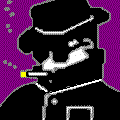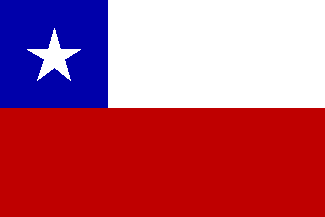



During the first five years of the Pinochet regime (1973-78), the armed forces and security forces successfully contained leftwing resistance against the government. Many members of Chile's oldest left-wing extremist group, the Movement of the Revolutionary Left (Movimiento de la Izquierda Revolucionaria--MIR), which was founded in 1965 and had close ties to Cuba, were killed or exiled. Nevertheless, the MIR remnants, under the leadership of the late Salvador Allende's nephew, Andrés Pascal Allende, continued to operate a small underground network in Chile. The MIR's principal leader, Miguel Enríquez, returned clandestinely to Chile in 1978 to revitalize the movement and organize for armed struggle and was soon joined by newly infiltrated cadres who had been trained in Cuba and Nicaragua. The security forces kept the MIR off balance, however, and Enríquez was killed in September 1983.
Several new left-wing terrorist groups emerged in the early 1980s. One was the United Popular Action Movement-Lautaro (Movimiento de Acción Popular Unitario-Lautaro--MAPU-L), a splinter of the United Popular Action Movement (Movimiento de Acción Popular Unitario--MAPU), a party founded in 1969 by a breakaway group from the Christian Democrats. Many MAPU leaders embraced Marxist positions, but the party was not a terrorist group. In December 1982, the MAPU-L established a youth group, the Lautaro Youth Movement (Movimiento de Juventud Lautaro--MJL), and a group dedicated to the overthrow of the military government, the Lautaro Popular Rebel Forces (Fuerzas Rebeldes Popular Lautaro--FRPL).
The Manuel Rodríguez Patriotic Front (Frente Patriótica Manuel Rodríguez--FPMR), an armed group affiliated with the Communist Party of Chile (Partido Comunista de Chile--PCCh), was formed in 1983. In response to increased armed attacks, the regime promulgated the 1984 Antiterrorist Law, which greatly expanded the list of crimes that could be categorized as terrorism.
In the second half of the 1980s, the FPMR became the dominant terrorist group, emerging as a sophisticated, well-trained, and well-supported terrorist organization. Just how strong it was became evident in August 1986 when the security forces captured a huge FPMR arms cache that was traced to Cuba. That September FPMR commandos nearly succeeded in assassinating Pinochet with M-16 assault rifles and antitank rockets. In response to these two events, Pinochet declared a state of siege and mounted an offensive against the FPMR and MIR.
Intensified police and security-service pressure on the FPMR and MIR continued throughout 1987, inhibiting the groups' activities. That year the FPMR splintered as a result of the PCCh's denunciation of violence; the breakaway Maoist-oriented FPMRAutonomous (FPMR-Autónomo--FPMR-A) became the most active left-wing terrorist group, whereas the FPMR followed the PCCh's line and laid down its arms after the restoration of democracy in 1990. Mainly as a result of FPMR-A activities, terrorist attacks increased in the late 1980s.
Meanwhile, the security forces failed to apprehend any members of right-wing extremist groups, such as the Chilean Anti-Communist Action Group (Acción Chilena Anticomunista--AChA) and the Nationalist Combat Front (Frente Nacionalista de Combate--FNC). The ability of these groups to operate with apparent impunity led to speculation in the late 1980s that their actions were unofficially sanctioned by some officials in the security forces.
The rationale for continued left-wing subversion and right-wing counterterror effectively vanished with the return of civilian government in 1990. Many left-wing extremists who had fled the country following the 1973 coup were allowed to return in 1990. Nevertheless, left-wing terrorism did not disappear. Within a few months after President Aylwin's accession to power, the FPMR-A and MJL showed that they remained committed to armed struggle and were responsible for most of the increased number of terrorist incidents in the early 1990s. The total number of documented terrorist actions during the first year of the Aylwin government was 207 (including 148 attacks on buildings and other properties), compared with 465 similar actions during 1984 and 401 in 1985--two peak years for terrorist activity during the latter half of the period of military rule.
The Aylwin government's attempts to control terrorism were quite successful. In 1991 it expanded training and increased efforts by the Investigations Police and the Carabineros. Police improved their counterterrorism capabilities, surpassing the effectiveness of the military government. This was made evident by their success in arresting numerous leaders and in uncovering several safe houses and training sites used by Chilean terrorists. By early 1993, more than 200 terrorist militants were under indictment. The capture of many top leaders of the MAPU-L and FPMRA crippled these organizations, and terrorist incidents declined. The Aylwin government appointed special investigating judges to try the more serious cases of terrorism, such as the assassination of Senator Jaime Guzmán Errázuriz on April 1, 1991.
Four ringleaders of the terrorist Manuel Rodriguez Patriotic Front (FPMR) broke out of Santiago's maximum-security prison on December 30, 1996, in an elaborately orchestrated escape via helicopter. In early September, one of the escapees, Patricio Ortiz Montenegro, requested political asylum in Switzerland, claiming he could not obtain justice in Chile. (In June 1995, a military court convicted Ortiz of the 1991 murder of a police officer and sentenced him to a 10-year prison term.) Chilean authorities are seeking Ortiz' extradition from Switzerland, where he was detained at year's end.